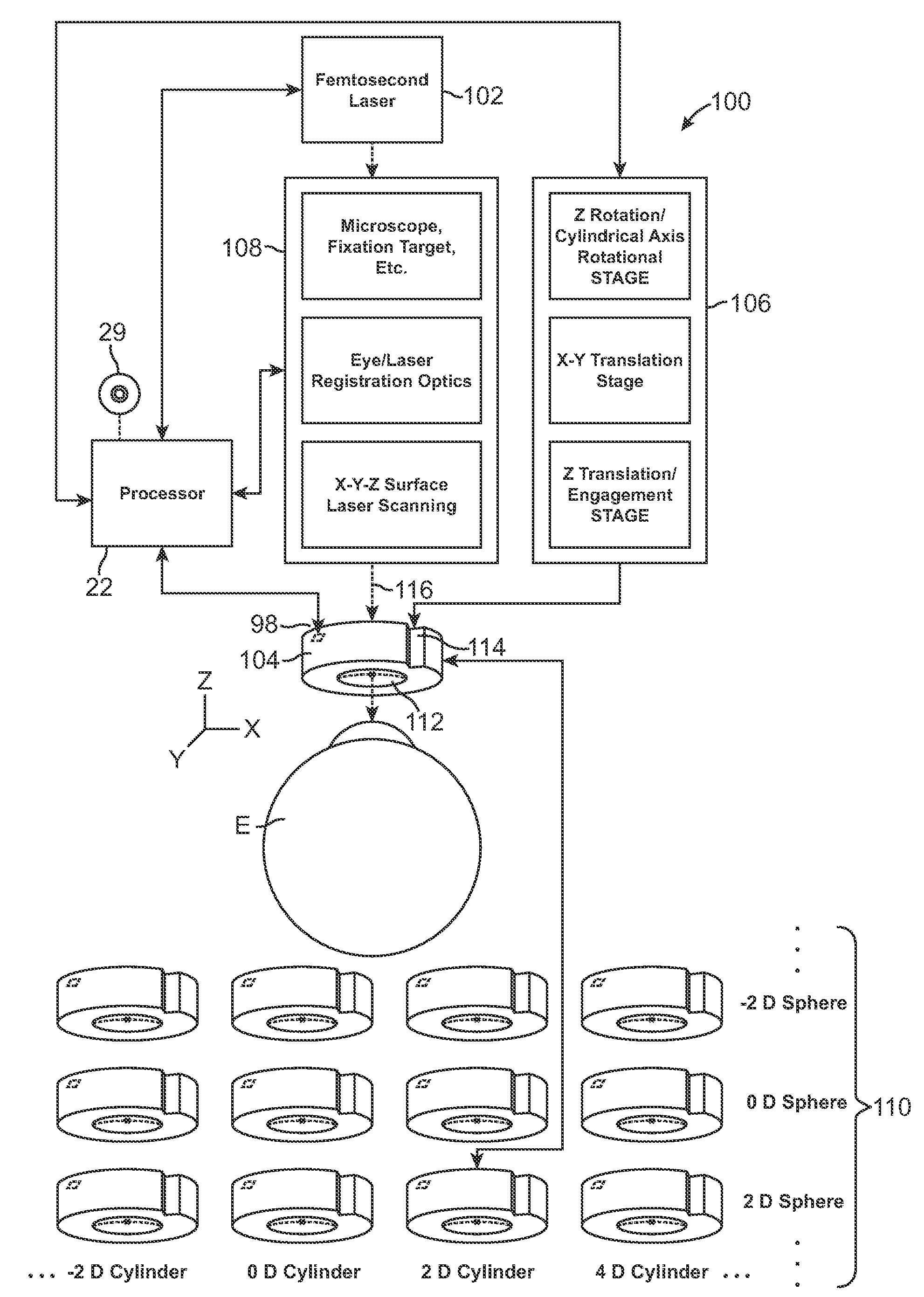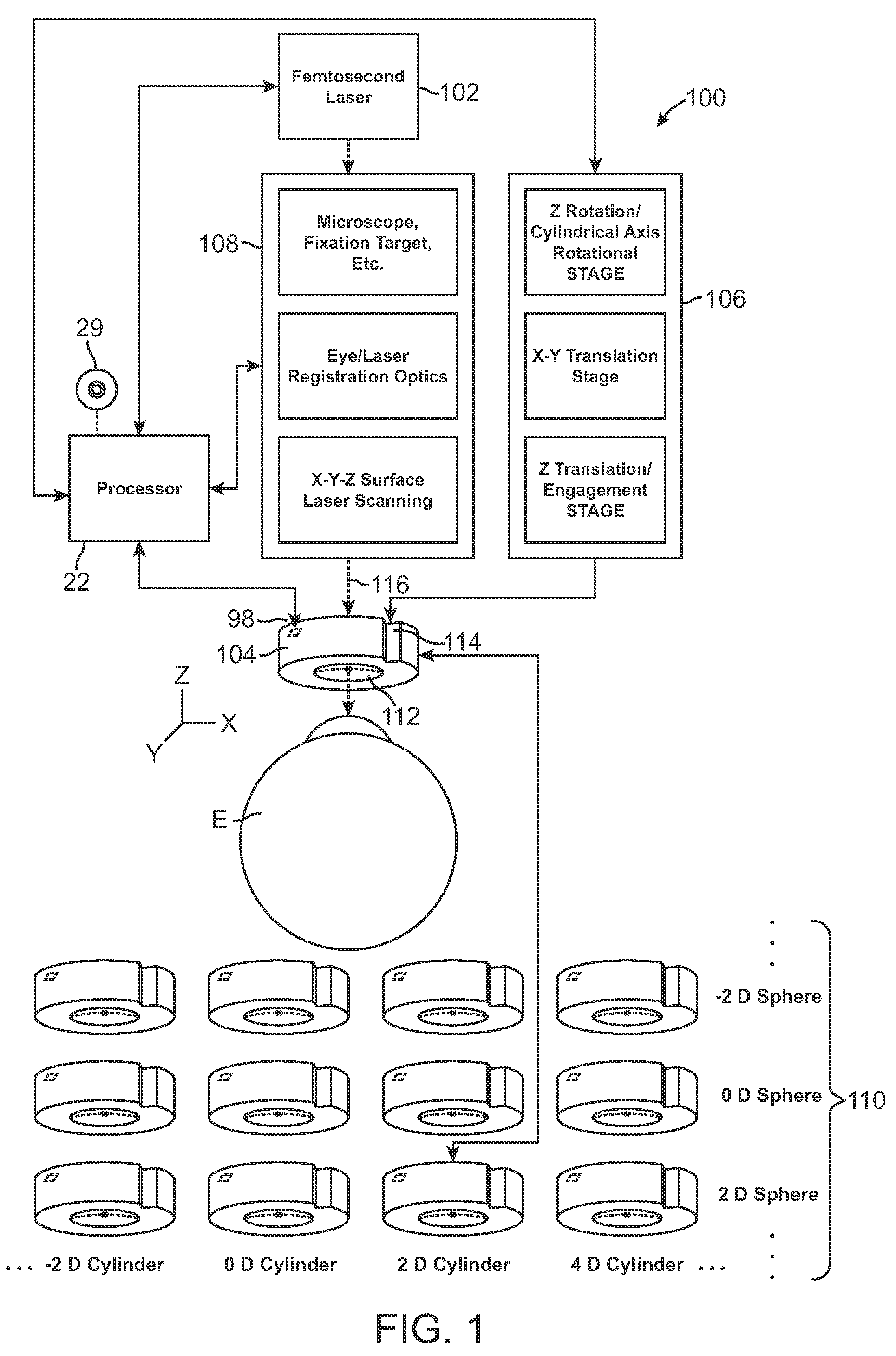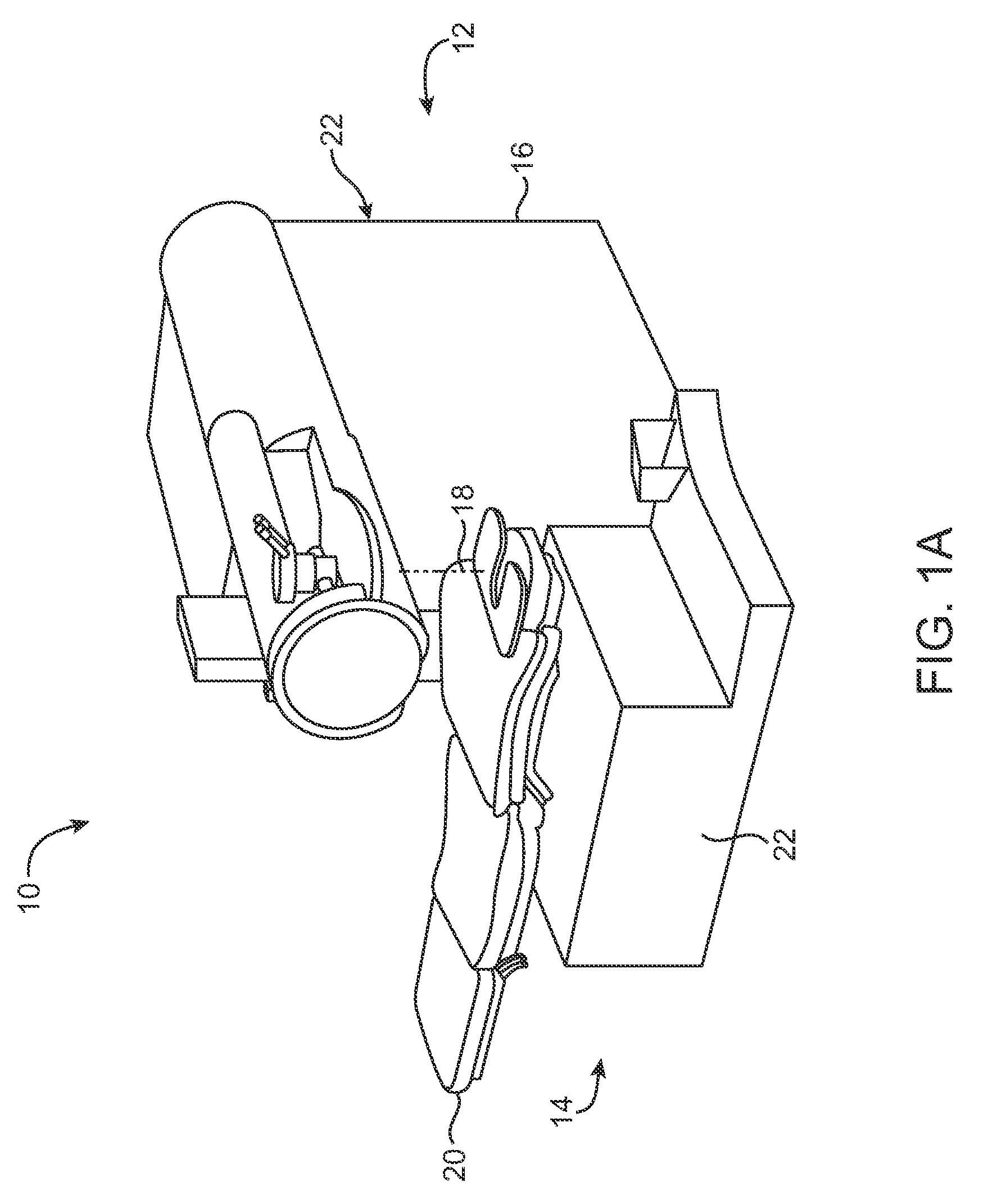Intrastromal Refractive Correction Systems and Methods
a refractive correction and intrastromal technology, applied in the field of laser eye surgery devices, systems and methods, can solve the problems of at least slightly different power of selected shaping bodies, actual regular errors of eyes, etc., and achieve the effects of reducing the risk of cataracts
- Summary
- Abstract
- Description
- Claims
- Application Information
AI Technical Summary
Benefits of technology
Problems solved by technology
Method used
Image
Examples
Embodiment Construction
[0038]The present invention generally provides improved devices, systems, and methods for refractive correction of an eye. Embodiments of the invention can take advantage of the capabilities of femtosecond lasers, picosecond lasers and the like, to incise the eye along precisely defined target surfaces. Advantageously, the volume of each individual laser ablation need not be precisely known and / or controlled, particularly when the total volume of tissue removal will be much greater than the overall volumetric ablation. Even when the absolute depth of individual ablations is not perfectly controlled or known, focused intrastromal laser ablations may be able to incise the corneal tissue along a surface shape with sufficient accuracy (such as by controlling the depths of ablation spots along a target surface relative to each other) so as to provide a desired high order resculpting of the overall cornea. By relying at least in part on incising and mechanical removal of tissues along the...
PUM
 Login to View More
Login to View More Abstract
Description
Claims
Application Information
 Login to View More
Login to View More - R&D
- Intellectual Property
- Life Sciences
- Materials
- Tech Scout
- Unparalleled Data Quality
- Higher Quality Content
- 60% Fewer Hallucinations
Browse by: Latest US Patents, China's latest patents, Technical Efficacy Thesaurus, Application Domain, Technology Topic, Popular Technical Reports.
© 2025 PatSnap. All rights reserved.Legal|Privacy policy|Modern Slavery Act Transparency Statement|Sitemap|About US| Contact US: help@patsnap.com



